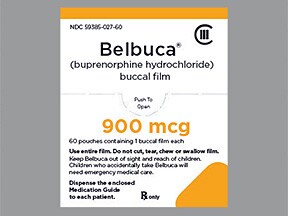

Inform patients and caregivers of their options for obtaining naloxone as permitted by individual state naloxone dispensing and prescribing requirements or guidelines (e.g., by prescription, directly from a pharmacist, or as part of a community-based program). Consider prescribing naloxone in patients using other CNS depressants or if the patient has household members or other close contacts at risk for accidental ingestion or opioid overdose. Strongly consider prescribing naloxone in patients being treated with buprenorphine for OUD because of the potential for relapse. For patients being treated for pain, discuss the availability of naloxone with all patients and strongly consider prescribing it in patients who are at increased risk of opioid overdose, such as patients who are also using other CNS depressants, who have a history of opioid use disorder (OUD), who have experienced a previous opioid overdose, or who have household members or other close contacts at risk for accidental ingestion or opioid overdose. To discourage abuse, the smallest appropriate quantity of buprenorphine should be prescribed, and proper disposal instructions for unused drugs should be given to patients. Abuse or misuse of the buccal film may cause choking, overdose, and death. The misuse of transdermal buprenorphine by placing it in the mouth, chewing it, swallowing it, or using it in ways other than indicated may cause choking, overdose, and death. Abuse and addiction are separate and distinct from physical dependence and tolerance patients with addiction may not exhibit tolerance and symptoms of physical dependence.


A potential risk of abuse should not preclude appropriate pain management in any patient but requires more intensive counseling and monitoring. Assess patients for risks of addiction, abuse, or misuse before drug initiation, and monitor patients who receive opioids routinely for the development of these behaviors or conditions. However, patients with mental illness (e.g., major depression) or a family history of substance abuse (including alcoholism) have an increased risk of opioid abuse. The risk of addiction in any individual is unknown. Addiction may occur in patients who obtain buprenorphine illicitly or in those appropriately prescribed the drug. Alcoholism, depression, implant insertion and removal complications, opioid overdose, opioid use disorder, potential for overdose or poisoning, requires an experienced clinician, substance abuseīuprenorphine is an opioid and therefore has abuse potential and risk of fatal overdose from respiratory failure.


 0 kommentar(er)
0 kommentar(er)
